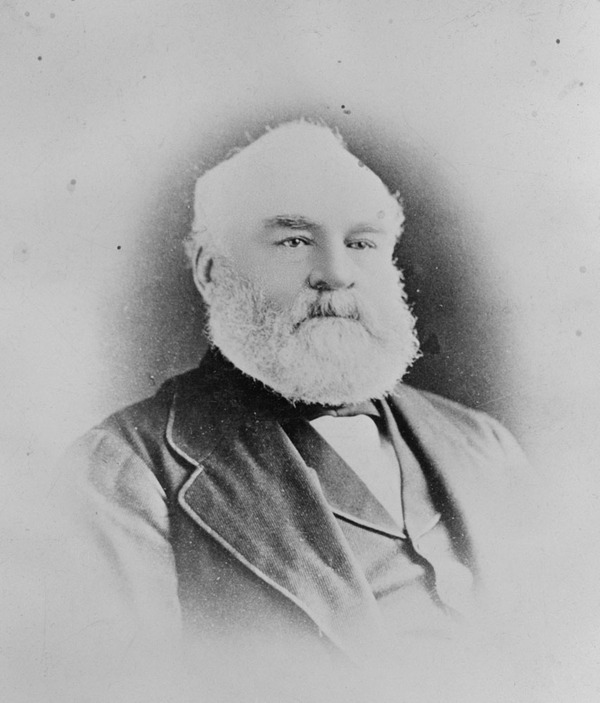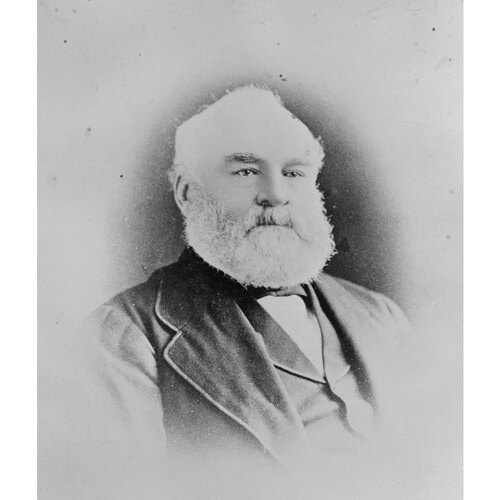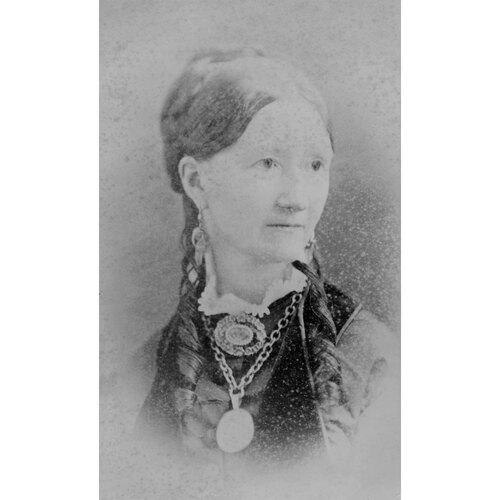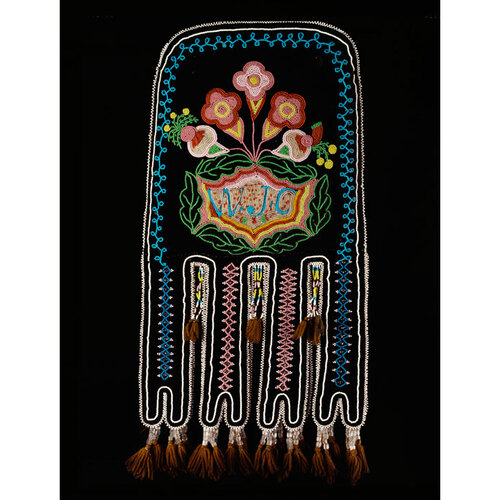CHRISTIE, WILLIAM JOSEPH, HBC officer, jp, businessman, and office holder; b. 19 Jan. 1824 in Fort Albany (Ont.), son of Alexander Christie* and Ann Thomas; m. 1849 at York Factory (Man.) Mary Sinclair, daughter of William Sinclair*; d. 22 Oct. 1899 in Seeleys Bay, Ont.
Son of a Hudson’s Bay Company chief factor, William Joseph Christie was educated in Aberdeen, Scotland. He returned to North America in 1841 and soon entered the service of the HBC. After a first posting to Lake Superior, he became apprentice clerk under John Edward Harriott* at Rocky Mountain House (Alta) in the Saskatchewan district, and then was transferred to York Factory under Chief Factor James Hargrave*. Made a clerk on 1 June 1847 with a salary of £100 per annum, Christie was sent in 1848 to take charge of Fort Churchill (near Churchill, Man.), which he found “an out of the way corner.”
Christie had done so well that in 1852, though still only a clerk, he was put in charge of the Swan River district, with headquarters at Fort Pelly (Sask.). He preferred this posting to Churchill because there was a better prospect of getting on in the service even though it was a troublesome charge by reason of the many free traders whose staple was American whisky. The best strategy, Christie thought, was to keep the Indians “well cleaned of furs” so that they had none for the free traders. This would make the trade unprofitable for the opposition, who would thus be discouraged and prevented from penetrating into the northern regions.
Promoted chief trader in 1854 and chief factor in 1860, Christie was sent in 1858 to Fort Edmonton (Edmonton) to take charge of the Saskatchewan district. He served there for 14 years, travelling extensively. Each year he made the trip with the boat brigades to the annual meeting of the HBC’s Council of the Northern Department. He also made longer expeditions such as a tour of the northern posts in 1862 with Alexander Grant Dallas*, the HBC governor-in-chief of Rupert’s Land, and two journeys to Scotland on furlough to visit his parents in 1861 and 1868.
While at Fort Edmonton, Christie entertained many notable visitors, including the members of the expedition led by John Palliser* in 1858–59. Eugène Bourgeau*, the expedition’s botanical collector, recalled with pleasure the evenings spent with Christie and his wife, especially the “good grog” that Mrs Christie prepared so well. The Earl of Southesk was another visitor who commented on Christie’s warm hospitality. An American prospector, John W. Jones, in Fort Edmonton in 1858 on his way to the Fraser River gold diggings, was, however, not favourably impressed by Christie’s manners. He thought that he “looked and acted as though he was the biggest toad in the puddle.”
The increasing number of newcomers – missionaries, miners, sportsmen, explorers, scientists, public emissaries – put unaccustomed pressure on transport facilities, provisions, supplies, and labour. Moreover, these newcomers were only one of the many changes with which Christie had to cope that were disrupting life on the plains by the 1860s. The supply route into the Saskatchewan district, formerly through Hudson Bay, was gradually shifted to the south, through the United States and the Red River colony (Man.). Drunkenness among the Indians and mixed-bloods, the result of increased numbers of free traders bringing whisky especially from Fort Benton (Mont.), and violent outbreaks of Indian warfare and horse-stealing raids caused incessant trouble. In 1870 Christie provided valuable information for William Francis Butler*, who had been sent to report on conditions in the Saskatchewan country. Butler had been empowered to appoint justices of the peace and made Christie one, although, as he reported, it was impossible to compel observance of the law without any means of enforcement. In 1871 he expressed appreciation for information given him by Christie, as Palliser had earlier, and later in the year Wemyss McKenzie Simpson, the Indian commissioner, was to send to the secretary of state a memorandum by Christie with a message from the Indians. One of Butler’s duties was to report on a virulent smallpox epidemic then raging which left death, demoralization, and hunger behind. Christie chaired the Saskatchewan Board of Health, set up to attempt to prevent the spread of the disease.
In 1872 Christie was appointed inspecting chief factor in the HBC, a new post that placed him second in command after Chief Commissioner Donald Alexander Smith*. Leaving Upper Fort Garry (Winnipeg) on 22 Aug. 1872, he made a tour of inspection of company posts that took him to Fort Simpson (N.W.T.) and back by dog train to Fort Carlton (Sask.), which he reached on 28 Jan. 1873. He thought his impression that the management of the HBC fur trade under Smith was negligent and inefficient was confirmed by the failure of the winter packet to arrive. He returned to Upper Fort Garry and travelled on to England to report to the HBC London committee. Failing to influence company policy, he resigned from the HBC and retired to Brockville, Ont.
Christie had been appointed a member of the provisional Council of the North-West Territories in 1872, but he does not appear to have attended any meetings. He had pressed for the establishment of peace and order in the Saskatchewan district and “the making of some treaty or settlement with the Indians.”
Recognized for his “intimate acquaintance with the Indians of the Saskatchewan, their wants, habits and dialects,” he was named a commissioner for the negotiation of Treaty No.4 at Fort Qu’Appelle in 1874 [see David Laird*] and for Treaty No.6 at forts Carlton and Pitt (Sask.) in 1876. Although he had resigned from the HBC, there was some resentment among the Indians over his company connection. His work in 1876 securing further adhesions by Indian bands to the treaties and reporting about the settlement on reserves by treaty Indians seems to have brought Christie’s career in the west to an end.
Even in retirement Christie maintained contact with the west through correspondence with former colleagues. He had three sons in the HBC. Some time after an operation for cataract in 1892 he and his wife moved to Seeleys Bay, where another son, Dr William Joseph Christie, lived. There, on 22 Oct. 1899, Christie died.
Leeds Land Registry Office (Brockville, Ont.), General reg. 5, no.2047 (letters of administration for W. J. Christie estate, 11 Nov. 1899). NA, MG 19, A21, ser.1; MG 29, A6; A11. Newberry Library (Chicago), Everett D. Graff Coll. of Western Americana, 2243, J. W. Jones, “Across the plains: my trip from Faribault, Minn., to Oregon, via, Saskatchewan route, British America . . . .” PABC, Add.
Cite This Article
Irene M. Spry, “CHRISTIE, WILLIAM JOSEPH,” in Dictionary of Canadian Biography, vol. 12, University of Toronto/Université Laval, 2003–, accessed April 3, 2025, https://www.biographi.ca/en/bio/christie_william_joseph_12E.html.
The citation above shows the format for footnotes and endnotes according to the Chicago manual of style (16th edition). Information to be used in other citation formats:
| Permalink: | https://www.biographi.ca/en/bio/christie_william_joseph_12E.html |
| Author of Article: | Irene M. Spry |
| Title of Article: | CHRISTIE, WILLIAM JOSEPH |
| Publication Name: | Dictionary of Canadian Biography, vol. 12 |
| Publisher: | University of Toronto/Université Laval |
| Year of revision: | 1990 |
| Access Date: | April 3, 2025 |






